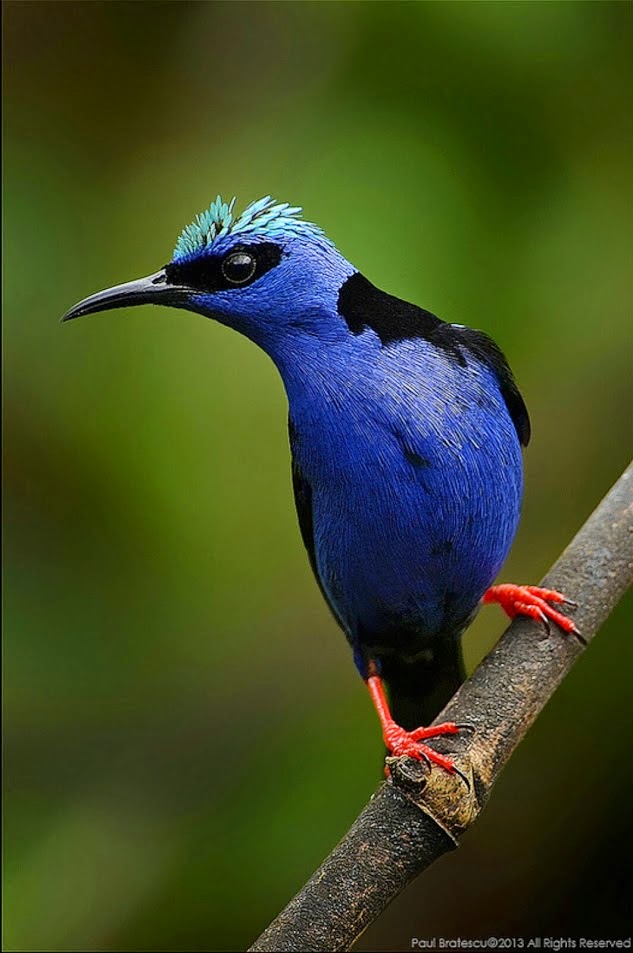Townsend's Warbler
Townsend's warbler (Setophaga townsendi) is a small songbird of the New World warblerfamily. These
birds have a yellow face with a black stripe across their cheeks
extending into an ear patch, a thin pointed bill, two white wing bars,
olive upperparts with black streaks on their backs and flanks, and a
white belly. Adult males have a black cap, black throat and yellow lower
breast; females have a dark cap and a yellow throat. Immature birds are
similar to females with a dark green cap and cheeks.
Their breeding habitats are coniferous forests with large trees on the northwestern coast ofNorth America. Their nests are shallow cups built with grass and lined with moss. These nests are usually placed atop a branch in a conifer. The female lays 4 to 5 brown-speckled white eggs.
Their breeding habitats are coniferous forests with large trees on the northwestern coast ofNorth America. Their nests are shallow cups built with grass and lined with moss. These nests are usually placed atop a branch in a conifer. The female lays 4 to 5 brown-speckled white eggs.
The red-legged honeycreeper (Cyanerpes cyaneus)
The red-legged honeycreeper (Cyanerpes cyaneus) is a
small songbirdspecies in the tanagerfamily (Thraupidae). It is found in
the tropical New World from southernMexico south to Peru,Bolivia and
central Brazil,Trinidad and Tobago, and on Cuba, where
possiblyintroduced.
The red-legged honeycreeper is on average 12.2 cm (4.8 in) long, weighs 14 g (0.49 oz) and has a medium-long black, slightly decurved, bill. The male is violet-blue with black wings, tail and back, and bright red legs. The crown of its head is turquoise, and the underwing, visible only inflight, is lemon yellow. After the breeding season, themale moults into an eclipse plumage, mainly greenish with black wings.
Tibetan Eared Pheasant
The Tibetan eared pheasant (Crossoptilon harmani),
also called Elwes' Eared Pheasant, is a species of bird in the
Phasianidae family. It is found in southeast Tibet in China and adjacent
India. Usually 2750 to 4700m elevation, but seen down to 2280m. Its
natural habitats are boreal and temperate forests. Seen in bushy and
grassy clearings, rhododendron thickets, and tall dense scrub in
valleys. It is threatened by habitat loss. 86cm long. They form
monogamous pair bonds in the spring. The female lays eggs from April to
June, and only she incubates them.
Indian Peacock
The Indian peafowl or blue peafowl (Pavo cristatus), a
large and brightly coloured bird, is a species of peafowl native to
South Asia, but introduced in many other parts of the world like the
United States, Mexico, Honduras, Colombia, Guyana, Suriname, Brazil,
Uruguay, Argentina, South Africa, Madagascar, Mauritius, Réunion, Irian
Jaya, Papua New Guinea and Australia. The species was first named and
described by Linnaeus in 1758, and the name Pavo cristatus is still in
use now.
Brahminy Starling
The Brahminy myna or Brahminy starling (Sturnia
pagodarum) is a member of the starling family of birds. It is usually
seen in pairs or small flocks in open habitats on the plains of the
Indian subcontinent.This myna is pale buff creamy with a black cap and a
loose crest. The bill is yellow with a bluish base. The iris is pale
and there is a bluish patch of skin around the eye. The outer tail
feathers have white and the black primaries of the wings do not have any
white patches. The adult male has a more prominent crest than the
female and also has longer neck hackles. Juveniles are duller and the
cap is browner.The species name pagodarum is thought to be based on
occurrence of the species on buildings and temple pagodas in southern
India.
Kookaburra
Kookaburras are terrestrial tree kingfishers native to
Australia and New Guinea, which grow to between 28–42 cm in length. The
name is a loanword from Wiradjuri guuguubarra, onomatopoeic of its
call.Source: Bird Photography
Red-Capped Robin
The red-capped robin is a small passerine bird native
to Australia. Found in drier regions across much of the continent, it
inhabits scrub and open woodland. Like many brightly coloured robins of
the family Petroicidae, it is sexually dimorphic. Source: Bird Photography
Brown Sicklebills
Brown Sicklebills’ machine-gun calls echo through the
mountain forests of New Guinea, imparting a primeval feeling. They use
that imposing curved beak to diversify their diet. It works nicely to
grab fruit and is precise enough to nab insects and even small animals.
The male’s stunning feathers are unique among all birds. Its long,
sabre-shaped metallic green-blue iridescence tail feathers have
important ceremonial value to native peoples.
Subscribe to:
Posts (Atom)














